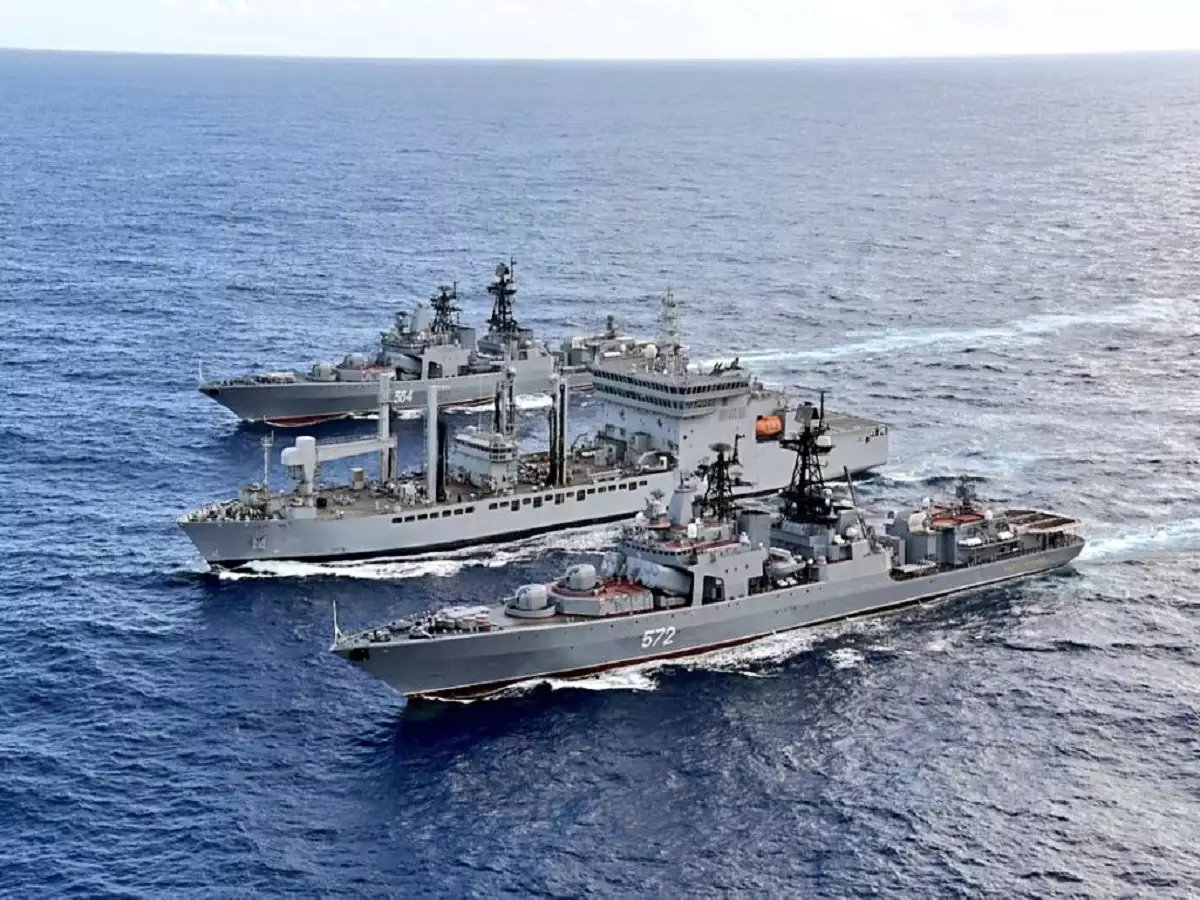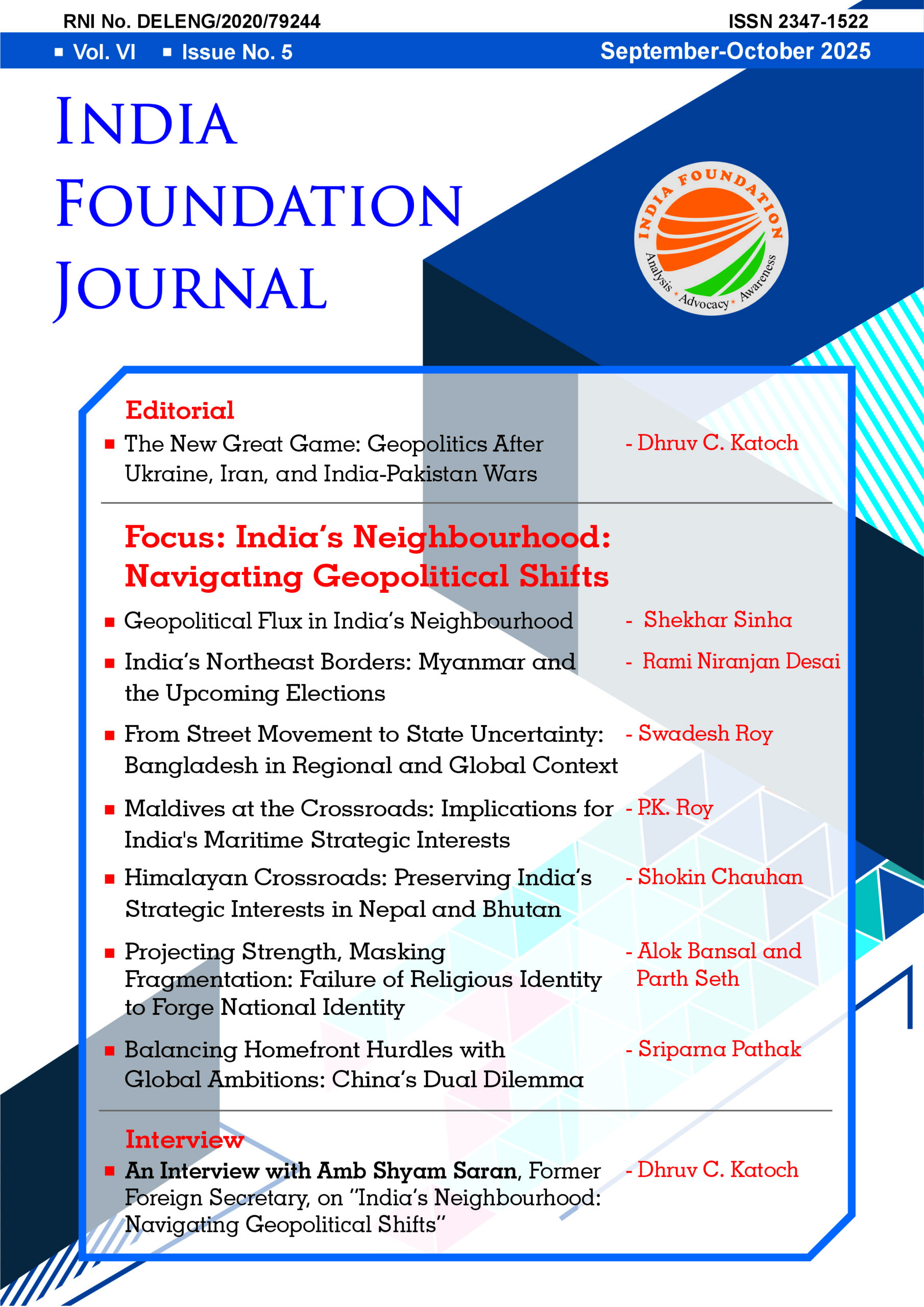Post the pandemic and with the on-going war in Ukraine, a new world order is emerging. The US dominance as the sole superpower is under challenge and the future is likely to see a multi-polar world. Today, with the world in flux, partnerships would be necessary, both for peace and prosperity as well as for a resilient future.
The Indian Ocean littorals and its island territories are home to over 2.6 billion people, which is roughly about 40 percent of the global population. Spread over 33 million square kilometers of land area, the region consists of 50 states which are least integrated, are generally poor and are still developing. In terms of energy resources, while 40 percent of the world’s offshore oil production comes from the Indian Ocean, about 80 percent of the world’s oil shipment passes through its waters.
Natural disasters such as cyclones and tsunamis occur frequently in this region, impacting all the littoral countries. The effects of climate change and environmental threats such as pollution are also a cause of concern. Addressing these issues would require a collective effort on the part of all countries. If the region is to become prosperous, it would have to knit a collective architecture, in the economic, financial and security domains. This would be necessary if we are to usher in an era of peace and stability and overcome environmental challenges.
The Indian Ocean region (IOR) has its own distinct history and geography, cultural linkages, and religious beliefs. It is today, central to world’s geopolitics, and thus has to be viewed through the lens of its own distinct identity, rather than as an adjunct to the larger Indo-Pacific. Historically, India’s west coast has been connected for millennia with the East Coast of Africa, the Gulf and with all the island nations in the western Indian Ocean. On similar lines, India’s east coast has such a connectivity with countries in Southeast Asia. Archeological and genetic findings point to the presence of extensive trade and commerce being carried out across the sea lanes of communication, large scale migrations and to the intermixing of communities. This led to the interflow of religion, art, culture architecture and societal practices. Sanjeev Sanyal’s brilliantly researched book, “The Churn of Oceans” supports the argument that the IOR is a distinct entity for economic and security partnership.
Robert Kaplan, in his popular authentic work, “Monsoon”, writes: “The Indian Ocean Region is more than just a stimulating geography. It is an idea because it provides an insightful visual impression of Islam and combines the centrality of Islam with global energy politics and the importance of world navies, in order to show us a multi-layered, multipolar world above beyond the headlines in Iraq and Afghanistan; it is also an idea because it allows us to see the world whole, within a very new and yet old framework, complete with its own traditions and characteristics, without having to drift into bland nostrums about globalization.” He subsequently writes, “it is the intermingling of challenges in each place—religious, economic, political, environmental—rather than each challenge in isolation, that creates such drama.”
During British rule, the Indian Ocean, especially for the period 1858-1947, was thought of as a ‘British lake,’ with Britain managing the administration of this vast area. The British centralized their control over the littorals through telegraph cables across the ocean. The ports of Calcutta, Bombay, and Madras enabled British shipping transiting between the Indian and the Pacific Oceans and consequently, by the middle of the 19th century, the Indian Ocean was deeply connected to international shipping routes and global trade. This continued, despite the disruptions caused by two world wars, through the middle of the 20th century. Thereafter, two transformational events—decolonization and the start of the Cold War, brought change to the Indian Ocean. The Cold War split the world into two camps. Decolonization led to independence from European control and development of new trade routes and economic networks. The Straits of Malacca and the Straits of Hormuz became nodes in global shipping network in IOR along with the development of new ports. Today, partnerships among the littorals and island nations can provide great potential for prosperity and peace to flourish in the IOR.
While peace is a desirable outcome, it can only come about through adherence to the rule of law by all countries and stakeholders. However, the vastness of the ocean does give rise to the emergence of traditional and non-traditional threats. With trade increasing at a phenomenal pace, lax ocean governance can be a disruptor, with negative consequences to the littoral nations. Security partnerships amongst the IOR resident nations can protect the region from the fallout of these threats, both natural and manmade. Institutionalised structures, embedded with modern technology, could mitigate to a large extent, the impact of these threats.
A matter of deep concern is the great power rivalry that is unfolding in the larger Indo-Pacific. This contestation will only increase in the coming years. The littoral countries will be hard-pressed to maintain neutrality, but even so, the unfolding situation will likely lead to increased tensions, which in turn would come at a cost, adversely impacting both the security as well as the prosperity and growth agenda of the littoral countries. In addition, some countries have taken huge loans from China. The financial transactions which have been undertaken are opaque and the term and conditions of the loans are such that the debtor country is hard-pressed to repay the loan. Consequently, debts have mounted to the extent that repayment has been negotiated by leasing of strategic assets, practically losing some degree of sovereignty. This also impacts on regional security and needs to be addressed through cooperative or partnership mechanisms.
Significant non-traditional threats also exist in the IOR. More often than not, Navies and Coast Guards become the first responders and are called upon to rescue the people so affected. What has been experienced frequently over the last few years is the spate of instances related to terrorism, piracy, human migration, drug and narcotics smuggling as also environmental issues such as tsunamis and cyclones. In case of natural disasters, people need immediate assistance in terms of shelter, food and medical aid, before resettlement is considered by local governments.
As majority of countries in the IOR littorals are poor and developing, poverty remains an important issue. Consequently, the need of the hour is a structured organization which can respond quickly to mitigate suffering. Therefore, what we need is to build a resilient architecture for mitigating/preventing damage by environmental/climate change.
The Lakshman Kadirgamar Institute, based in Sri Lanka, has estimated that the Indian Ocean economy would account for 20% of global GDP by 2025. Growth of trade in the region has outperformed the world economy since 2000. For the period 2000-2008, trade grew at an annual rate of 9.4 percent. Thereafter it slowed down to 4.8 percent for the period 2011-2017, due to the impact of the global financial crisis. This compares favorably with the world trade volume growth, which stood at 6.9 percent and 3.9 percent respectively, for the above periods. This reflects the increasing openness of the region’s economies, demonstrates the importance of trade to the region and highlights the fact that Indian Ocean economies are more closely integrated into global trade flows than the world at large.
The pandemic brought to the fore supply chain disruptions in the world due to manufacturing hubs becoming non-functional on account of workers being forced to stay at home, even if fit to work. As most of these hubs were located in China, it forced major industrial houses to consider shifting some of their manufacturing units to different IOR countries. This process has started, though several challenges remain, chief among them being the limited capacity of many ports in the IOR, such as port infrastructure in Tanzania, Yemen, Myanmar, to handle the growth of maritime traffic. There are also issues related to border clearance excise and custom duties checks which delay the clearance and onward movement of goods.
Usage of new technologies, especially of artificial intelligence (AI) will need to be employed to overcome these bottlenecks. Governments in the IOR littorals need to precisely identify challenges they may encounter and consider remedial measures that need to be taken. Transparent financiers are available and so are partner countries. This is where partnership becomes key to resilient prosperity. India, Japan, and several African countries have launched Asia-Africa growth corridor to invest in a transparent manner to the countries needing assistance. This will prevent them falling prey to high interest rate and unacceptable terms and condition loans. The debt trap is very evident in the IOR.
High tariffs are another issue which could become a barrier to trade growth. Partnerships amongst IOR countries, could help alleviate such problems, by concluding agreements on Free Trade or on Standard Tariff. This will essentially guide the future of growth of economic activities in the IOR. But more challenges remain. As per Wignaraja, Collins and Kannangara, strengthening regional economic governance and narrowing development gaps are also central to ensuring that the region realizes its economic potential. This is essential for the prosperity and sustenance of the IOR.
In an attempt to invite business in the form of merchant ship support for transiting traffic countries, we must exhibit due care to prevent falling in the trap of business models which can subsequently throw up security challenges for the countries in the region, and also lead to the mortgaging of their sovereign assets. We need to integrate the region in priority areas such as health & Pharmaceuticals, agriculture & agro-processing, disaster management and skill enhancement. All these would boost people to people relations across the region, which in turn would form the basis for better understanding and smooth operations.
Connectivity between ports, such as Jamnagar in Gujarat with Djibouti in the Gulf of Aden, Mombasa and Zanzibar with ports connected to Madurai, and Kolkata with Sitwe in Myanmar indicate, that in the maritime world, development and prosperity are intertwined. This calls for partnerships amongst regional nations. The IOR needs better connectivity with a greater spread as also better infrastructural development in their hinterland.
Author Brief Bio: Vice Admiral Shekhar Sinha is the Chairman of Board of Trustees, India Foundation
Note: This article was published by India Foundation in the Indian Ocean Conference 2023 Theme Paper Booklet.
References
- Alexander E Davis & Jonathan N Balls. “The Indian Ocean Region in the 21st Century: geopolitical, economic, and environmental ties” (Australia India Institute).
- Robert D. Kaplan. “The Indian Ocean and the Future of U.S. Power,” The Globalist, October 30, 2010, https://www.theglobalist.com/the-indian-ocean-and-the-future-of-u-s-power/.
- Robert D. Kaplan. Monsoon: The Indian Ocean and the Future of American Power (Random House Trade Paperbacks, September 2011)
- Sanjeev Sanyal. The Ocean of Churn: How the Indian Ocean Shaped Human History (India: Penguin Random House, August 2016)




